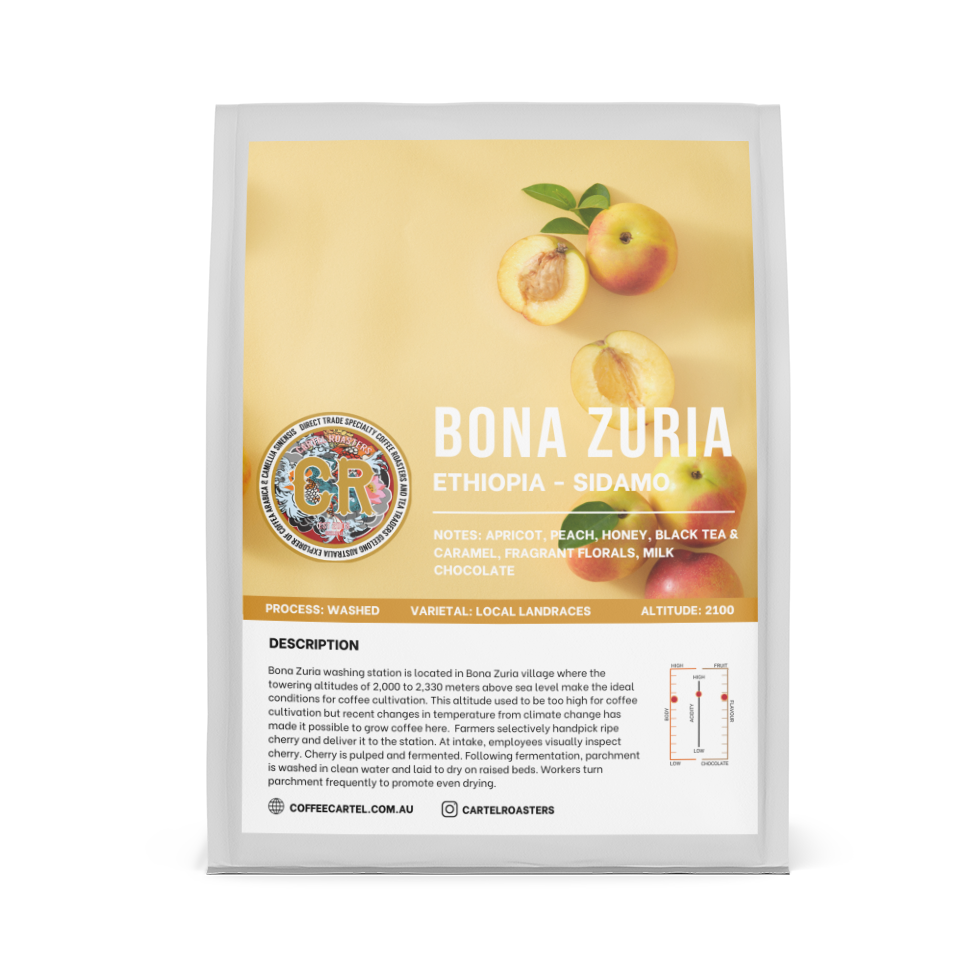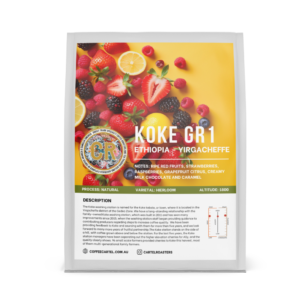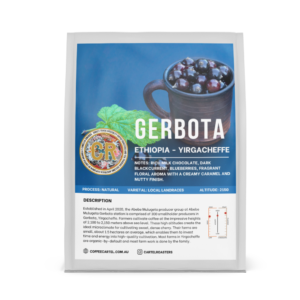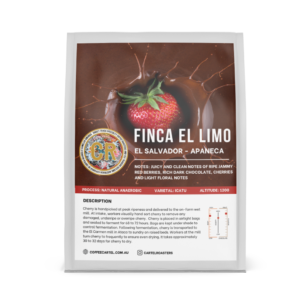About this coffee
- Altitude: 2100 MASL
- Farmer: BONA ZURIA
- COUNTRY: ETHIOPIA
NOTES: APRICOT, PEACH, HONEY, BLACK TEA & CARAMEL, FRAGRANT FLORALS, MILK CHOCOLATE
Bona Zuria washing station is located in Bona Zuria village where the towering altitudes of 2,000 to 2,330 meters above sea level make the ideal conditions for coffee cultivation. This altitude used to be too high for coffee cultivation but recent changes in temperature from climate change has made it possible to grow coffee here.
The Bensa zone in Sidamo has been making the quality headlines the past few years. Bona is located in the same highland as the well known Bombe region. Coffees from the Bona Zuria district stand out for their brightness and intensity. They have a unique flavor profile that can hold its own against the famed locations in Yirgacheffe. One theory to explain this quality status states that coffee cultivation in these highland regions took off only recently, with plantations dating back 10 years. The coffee trees are in their prime now and producing good yields with high quality coffee.
The general picture for these broader regions shows harvest and quality following strong on and off cycles because of a lack of strong agricultural practices. These younger plantations in the Bona area help bring back the glorious bright and floral cup quality that Ethiopia is so often associated with.
Many would say that the strength of Sidamo coffees lies in the regions’ diversity of profiles. The many microclimates and varying soil types lead to striking differences from town to town. But across all Sidamo coffees is a profound complexity that many attribute to the diversity of local landrace varieties. Varieties can differ from town to town and even farm to farm where each farmer may have more than one unique variety seldom or never found outside their plot.
When all these different varieties are blended at the local cooperative, the resulting blend expresses the complexity of the plant genetics in the area.
Farming methods in Sidamo remain largely traditional. Sidamo farmers typically intercrop their coffee plants with other food crops. This method is common among smallholders because it maximizes land use and provides food for their families.
In addition to remaining traditionally intercropped, most farms are also traditional and organic-by-default. Farmers in Sidamo typically use very few — if any — fertilizers or pesticides. Most farm work is done manually and very few tasks are mechanized, even during processing.
Great selection of Ethiopian coffees from the various regions. Fast postage too.





